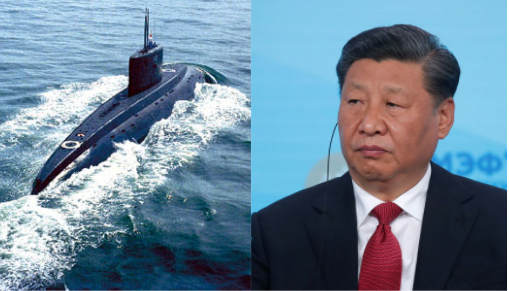A move that strengthens Prime Minister Narendra Modi’s Make in India and Aatmanirbhar Bharat campaign, the Union government is all set to launch the bidding process for a ₹ 55,000-crore mega project to build six conventional submarines for the Indian Navy. While the project will increase the power of Navy in the international waters, simultaneously it will also narrow the gap between China and India’s naval prowess.
According to a report in live mint, the mega-project is named P-75 I and separate teams of the Defence Ministry and the Indian Navy have completed the groundwork, like specifications of the submarines and other critical requirements for issuance of the RFP (request for proposal)
The submarines will be built in India under the much-talked-about strategic partnership model that allows domestic companies to join hands with leading foreign defence majors to produce high-end military platforms in the country and reduce import dependence.
The South Block has already shortlisted the Indian and foreign companies that will collaborate on the project to churn out the submarines. The shortlisted Indian entities are L&T group and state-owned Mazagaon Docks Limited (MDL) while they select foreign entities included ThyssenKrupp Marine Systems (Germany), Navantia (Spain) and Naval Group (France).
The Navy has been focusing on significantly bolstering its overall capabilities because of China’s growing efforts to increase its military presence in the Indian Ocean Region.
India swift and covert with the deployment of Naval warships
Reported by TFI, two Indian Navy warships had secretly joined the US Navy destroyers deployed in the South China Sea after the Galwan valley clash. Since the news broke out in the media circles, the defence pundits have been applauding India for being swift and covert in its actions.
In addition to the warships, the Indian Navy has also mobilised its assets along with the Indian Ocean Region (IOR), especially at the Strait of Malacca- a narrow chokepoint dividing the Indian and Pacific Oceans.
ANI has quoted government sources as saying, “Soon after the Galwan clash broke out in which 20 of our soldiers were killed, the Indian Navy deployed one of its frontline warships to the South China Sea where the People’s Liberation Army’s Navy objects to the presence of any other force claiming the majority of the waters as part of its territory.”
China will now have to think twice before going ahead with salami-slicing tactics in India’s Ladakh or Arunachal Pradesh. An active Indian Navy in the Indo-Pacific is China’s worst nightmare. Moreover, India is becoming an even stronger Navy with its militarisation plans in the Andaman & Nicobar Islands from where India can single-handedly block Chinese shipping routes into the Indian Ocean.
The Quad flexing its muscles in the region
Given the ongoing Chinese belligerence in the East China Sea, the South China Sea, and Eastern Ladakh, it is becoming clearer that if and when another global conflict happens, it will happen in the Indo-Pacific. And China will be at the centre of such a conflict.
The Quad comprising of India, Australia, Japan, and the USA is strategically moving ahead in the region with the sole aim of hashing out China’s hegemony.
After US spy planes snooped over the PLA Navy near the Paracel Islands, the Chinese were so flabbergasted that they fired four ballistic missiles in the disputed water territory to vent its anger. US Secretary of State has already remarked that the US is taking out troops from Australia to station them in the South China Sea to counter China’s unsolicited advances.
The USA had retaliated by sanctioning 24 Chinese companies for helping China build “military islands in the South China Sea. These companies include China Communications Construction Company (CCCC) subsidiaries, and it is imperative to note that CCCC is the backbone of China’s ambitious BRI plans.
Recently Australia’s Prime Minister Scott Morrison had even announced a 40 per cent hike in defence spending over the next decade, keeping in mind the threat of China that the down under country has faced in the aftermath of COVID-19. Morrison has realised how China has carved out a more dangerous world order out of the ongoing Pandemic.
“Tensions over territorial claims are rising across the Indo-Pacific region, as we have seen recently on the disputed border between India and China, and the South China Sea, and the East China Sea. The risk of miscalculation and even conflict is heightening…Previous assumptions of enduring advantage and technological edge are no longer constants and cannot be relied upon. Coercive activities are rife.” Morrisson had said in July.
Australia has also named India as one of the main committed partners in the Indo-Pacific. This is crucial as only in June, India and Australia signed the Mutual Logistics Support Agreement (MLSA) that increases military inter-operability by allowing each other’s navies to access military bases for logistical support.
Reported a couple of days back by TFI, the Philippines has also now openly threatened Beijing that if it continues with overtures in the region, it will invoke its defence agreement with Washington and call in the US Navy.
India inviting the bid for building more submarines is expected to rile China even further. The developments in the region are keeping China at its toe and it should think twice before making any of its sinister and vile plans.
